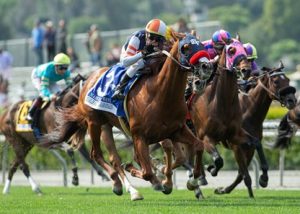
One comment we often hear from owners is, “My biggest fear is my horse will show up again at a track somewhere else,” followed by, “How can I prevent that?” These can be issues, and occasionally, a horse will end up back at a racetrack for some reason, but there are steps owners can take to ensure their retired horses stay retired.
- Retire the Jockey Club Papers – This is an important step that often gets skipped when owners give their horses away. The Jockey Club allows for registration papers to be Transferred as Retired From Racing, which will prevent the horse from being entered in a race at any racetrack. This will also be noted on any Duplicate, Corrected, Imported or Exported certificates, meaning even if there is a duplicate set of papers on your horse, it will be recorded as Retired From Racing. The form can be downloaded here and should be filed with the Jockey Club within 60 days of retiring the horse.
- Use a Reputable Charitable Organization – There are hundreds of organizations and countless individuals who work in Thoroughbred Aftercare, so it can be challenging to know who to trust when it comes to placing your horse. Working with an accredited organization is the best way to ensure your horse will be placed in the right home and will continue to be monitored once it has begun its second career. The Thoroughbred Aftercare Alliance is the national accrediting body for Thoroughbreds and is an excellent resource for reputable organizations. CARMA’s Aftercare Partners have gone through an extensive grant application process, and many are also TAA Accredited.
- Stay In Touch – While it may seem like once your racehorse has left the track, there’s no need to keep track of it, owners who stay in touch with their former racehorses often have more peace of mind when it comes to where they are and what they’re doing. Charities that rehome or retire racehorses welcome involvement from the racing connections. Charity operators love to know what the horse was like at the track, what the owner’s favorite race was, or any fun stories they may be able to share. This personal connection is welcomed and valued by the charities, so don’t be afraid to say you want to stay in touch and be kept informed of how your horse is doing when you place them. Making this request means you will know when your horse is initially placed and as it moves from home to home during its next stage of life. It’s also nice for an owner to have not only a racing picture of their horse but a picture of them in their second career as well!
Retiring your racehorse is an important and vital part of your racing business. Having and making a plan at the start of the horse’s racing career will ensure that when it comes time for retirement, all the necessary items are in place to make it an easy transition.
